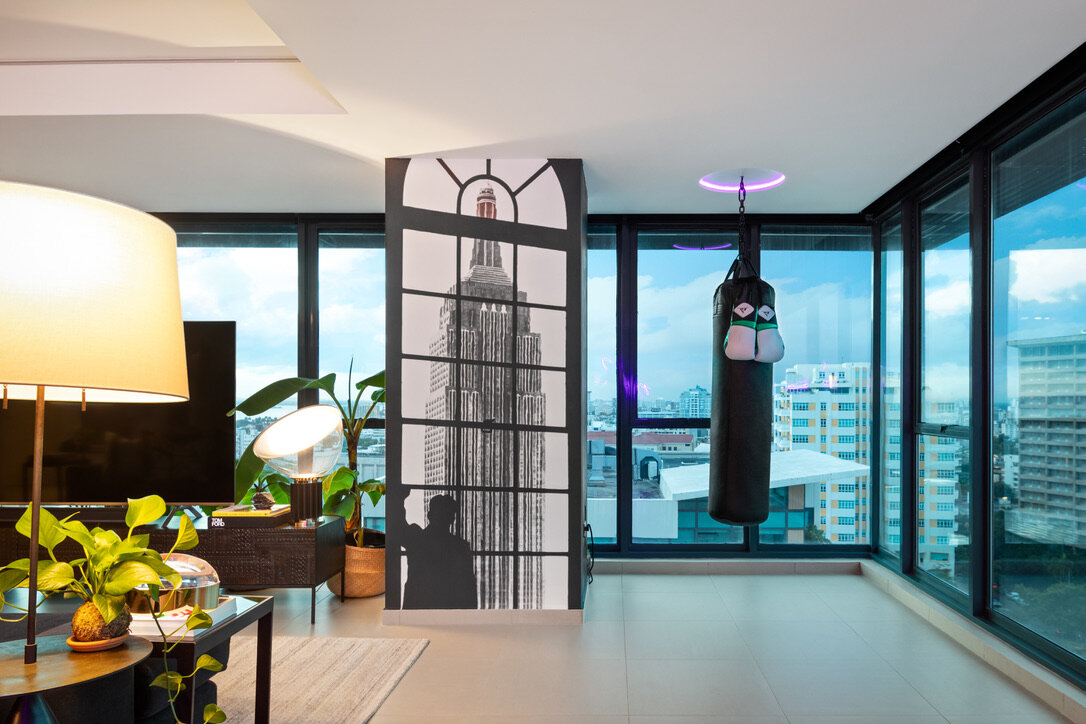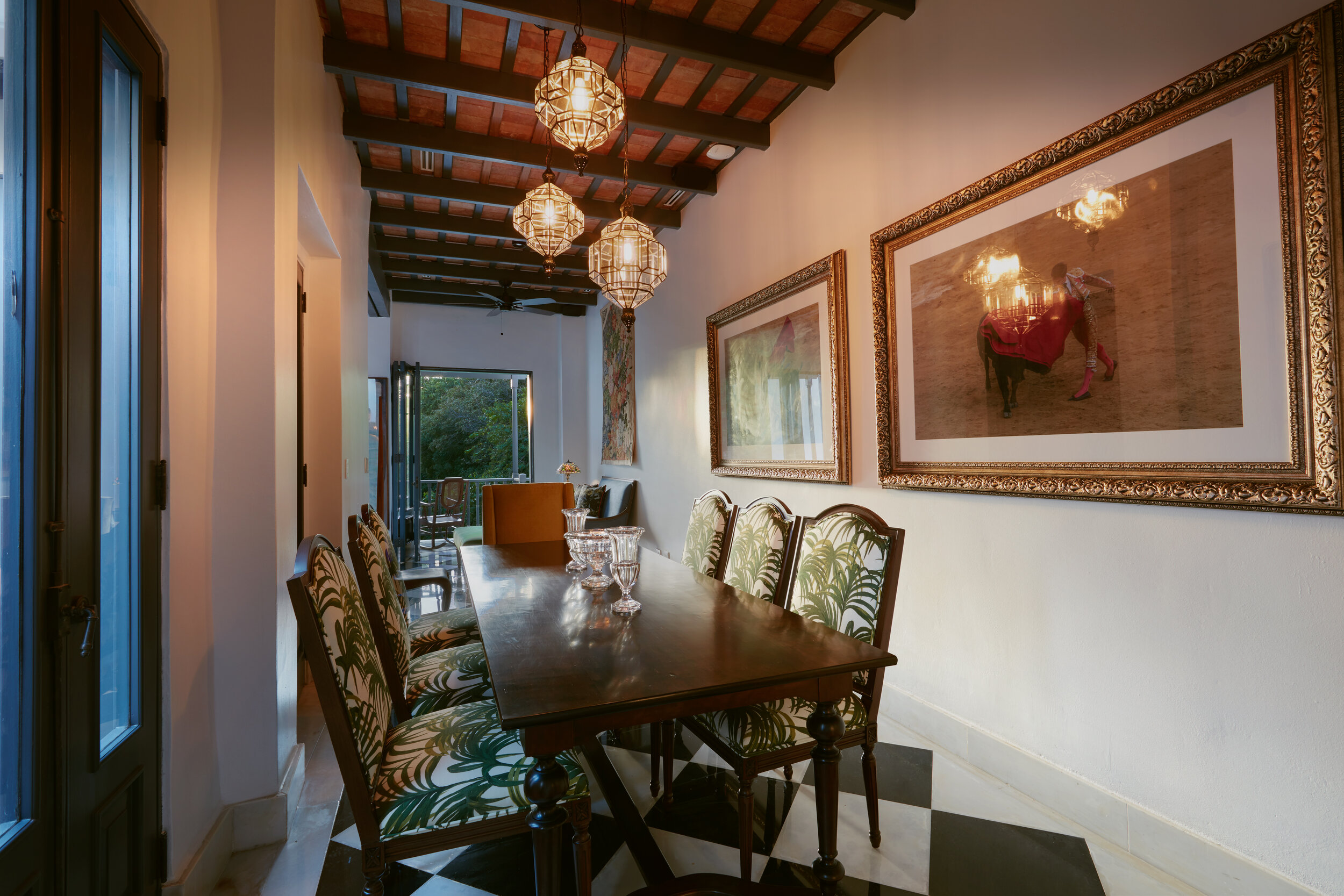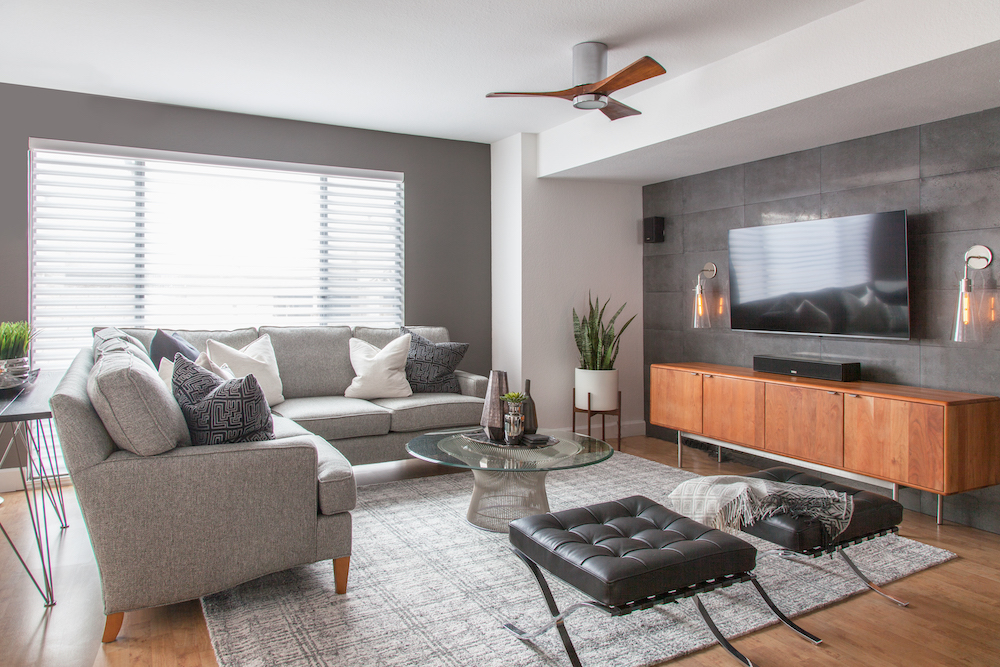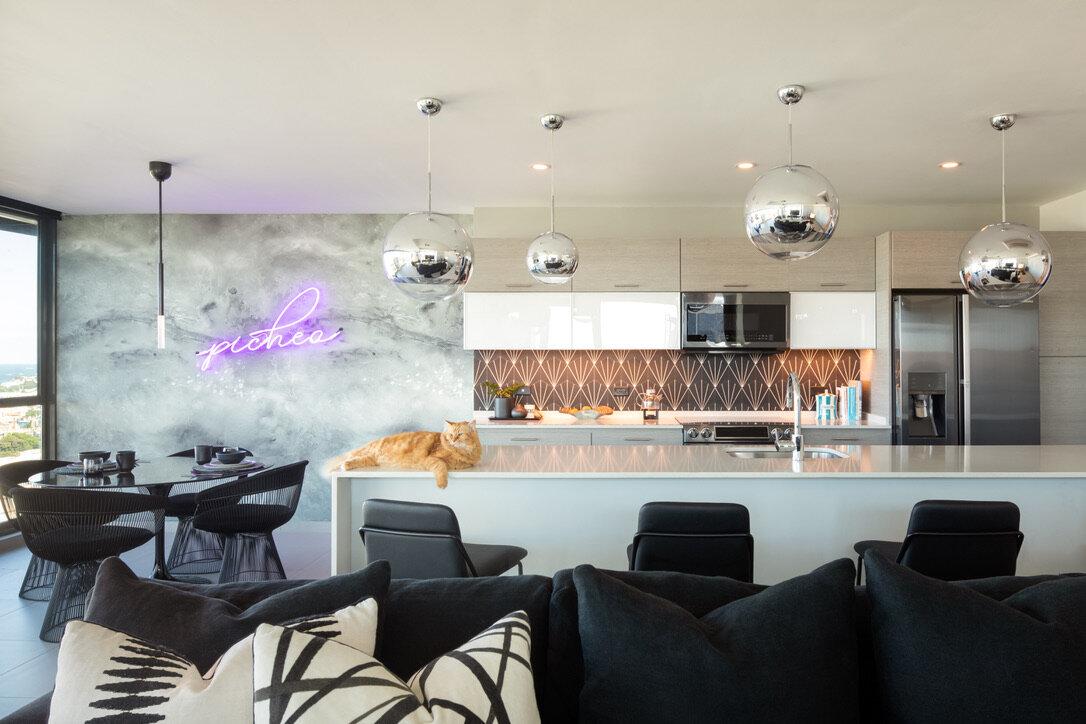The Covid-19 pandemic created new ways of life worldwide. People across backgrounds and professions are now working and spending more of their free time at home. At the same time, the pandemic created a newfound awareness around the impact surroundings have on our overall well-being.
Following this shift in perspective, performance-grade home materials have begun developing faster than ever before. In the past, companies like Sunbrella were the go-tos for performance materials. Today, these products are in mass production, and in some cases, are seen as the number one choice when selecting home furnishings.

High-Traffic Areas
When designers discuss furnishing preferences with their clients, the most important conversation usually centers around lifestyle. What is the traffic like within a client’s home? Do they enjoy entertaining guests? For Generation X or empty nesters, fabrics including silks, cottons, linens and leathers resonate. For younger, starter-home clients with children, performance fabrics are often the go-to.
For Megan Siason, founder and principal designer of M Studio Interior Design based in Orange County, California, the majority of her clients reside on the coast. Several lead busy lifestyles, and have both children and pets. Her clients primarily gravitate toward performance fabric for high-traffic areas including stain and spill-resistant upholstery fabric, and pet-proof rugs to prevent scratching damage.
Similarly Fernando Rodriguez, founder and owner of Fernando Rodriguez Studio, operates out of both Puerto Rico and New York. Rodriguez recently finished redoing a home for a couple with two toddlers. He worked closely with the client to incorporate a mix of materials, choosing fabrics based on two segments within the home: areas for entertaining, and areas for child’s play.
“In the den where the kids are, for example, we used Perennials Fabrics,” he says. Fabrics from Perennials are highly durable, fade-resistant, mildew- and mold-resistant, bleach cleanable — and therefore, easily maintained.
“Nowadays, Perennials have so many fabrics that last much longer, even in white,” Rodriguez says. “We ended up using a solid green with a navy piping.”
Most performance fabrics are constructed from synthetic yarns like polyester, acrylic, nylon and olefin. Typically the yarns are treated with a high-performance solution before being woven into fabric to ensure the longevity of the finished product.
Rodriguez also incorporated a polypropylene rug. Made to handle messes and scratches, these rugs are extremely resilient and can easily bounce back from wear and tear. They are even viable for outdoor use.
“With kids around, it’ll last longer than a silk or wool rug,” Rodriguez says. “With a water spill alone, silks are destroyed. Spending less on a poly rug might be the better option, so you can replace it if you have to. With a silk, wool or bamboo rug, you have a bigger problem on your hands — replacing those rugs would be expensive.”
The couple also chose vinyl wallpaper for easy cleaning. Vinyl wallpaper is typically sprayed or coated with an acrylic type vinyl or polyvinyl chloride (PVC), making them both scrubbable and strippable.
“With vinyl wallpaper, it’s much easier to keep them from developing a little Leonardo Di Vinci in the making, in case the kids decide to use crayons or markers on the wall,” Rodriguez says.

Flooring
Before vinyl flooring made a comeback, engineered wood was a popular choice for Siason’s clients. She often used the material to avoid the natural expansion and contraction that occurs with solid wood.
“Because of the humidity and varying weather conditions, natural wood tends to buckle,” she says. “All of a sudden we have gaps in the wood.Engineered wood offers a better way to control the movement on the floor.”
As luxury vinyl began to emerge again, Siason says both the price point and installation process have been a huge plus. Vinyl planks, for example, can be installed with a peel-and-stick method, and in most cases, look and feel like real wood.
“There are some really awesome benefits to the luxury vinyl planks over the years,” she says. “It’s something that has become more and more realistic looking. When you’re walking on a vinyl tile, you can actually feel the difference too. It’s so much softer on your knees.”
Vinyl planks are more resistant to scratches, chipping and other surface damages as well, making them an ideal choice for children or pet owners.
Working in similar climates within Puerto Rico, Rodriguez uses tile that resemble planks of wood. He used this material on a recent apartment project.
“There was also an area that was close to an outdoor terrace where we used a stone — I tend to use limestone — that imitated the color of the wood,” he says. “That allowed us to have the same look throughout the home and have a good surface that was very strong for both rain and sun.”
Rodriguez emphasizes that durability is a major factor when it comes to working with tile flooring.
“The way it wears has to be much more durable, because you’re not changing out your tile every two years like you would with a sofa,” he says. “It’s easier for the client to invest in certain flooring if they understand the product’s true durability. It’s going to be in the house for a long time.”

Kitchens, Bathrooms and Everything in Between
Several buyers today, especially Millennials, are educated on offerings throughout the market. When it comes to affordability and performance in the kitchen, most new homeowners know: quartz is king. Using the stone on countertops, for example, makes it ultra-durable. Quartz is able to withstand cuts, spills and drops without much consequence, according to Rodriguez. It can also be engineered in a variety of designs.
“I have a white quartz countertop in my home right now, and it has gone through hell and back,” he says. “After six years of use it still looks perfect.”
Decorative, natural stones such as marble are much harder to protect. Marble is much softer than other stones and is more porous, making it prone to absorbing liquids. Although there are sealers on the market claiming to prevent etching or staining, to some, it also gives the stone an artificial look.
“Instead I use a lot of quartz in my projects, limestone, or Porcelanosa,” Rodriguez says. Porcelanosa is a man-made synthetic material that also retains various patterns. It can be used on countertops, flooring, wall tiling and more.
“It’s a material that is super durable,” he says. “It doesn’t break easily, and now it comes in various patterns, colors and textures from imitation marble to other stones. Depending on what you choose, it can look very close to real marble. It’s a great option when you want to achieve that ‘marble block’ look without having to use actual marble.”
While Porcelanosa is a great option for affordability, there is a catch — the material is coated and printed over wood, meaning if it chips, the true makeup beneath it is exposed.
“Those are the little things that are also important to tell people,” Rodriguez says. “You want Porcelanosa to feel natural, even though it isn’t. It’s a give and take.”
In some cases however, clients aim to create an impression in certain high-traffic areas of their home using a natural stone.
“I have a client who went with limestone and Porcelanosa for the bathroom because it’s much more affordable and longer-lasting,” he says. “For the kitchen, they went with a beautiful marble countertop. It’s a balance of budgets.”
Siason has also seen engineered quartz products on the market for several decades, typically created with a mixture of resin, porcelain and other materials that make it both durable and antimicrobial.
“Designers will use this often, especially in spaces like kitchens where food is consumed,” she says. “That way bacteria sits at the top of the counter instead of seeping in. Natural marble doesn’t perform very well in a kitchen. If you leave a little bit of wine on there, it’ll start to color the stone. If you get an engineered quartz product that looks like marble, you have the aesthetic without the performance failures.”
When it comes to cabinetry, Siason prefers to use high-pressure laminates (HPL) or thermally fused melamine with a wood grain pattern. HPL is considered one of the most durable decorative surface materials. It performs well in several applications including furniture, cabinetry, flooring and wall treatments.
“They’re not real wood, and they perform a little better than natural wood or painted cabinet doors,” Siason says. “They have several layers of material that make it very durable. The final finish exterior holds up way better when it comes to everyday use. It keeps them a little bit cleaner. Even as a man-made product, there are some really pretty options.”
Overall, designers aim to show clients the importance of living in a space that fits their lifestyle, and is designed with intention. Curated performance materials help alleviate concerns around wear and tear, creating a greater sense of sanctuary within the home for years to come.
“Your home gives you energy,” Rodriguez says. “Now more than ever, people understand how important our surroundings are, and how the home affects our daily lives. They want to show personality through their design choices. It really is a little temple of your soul."







